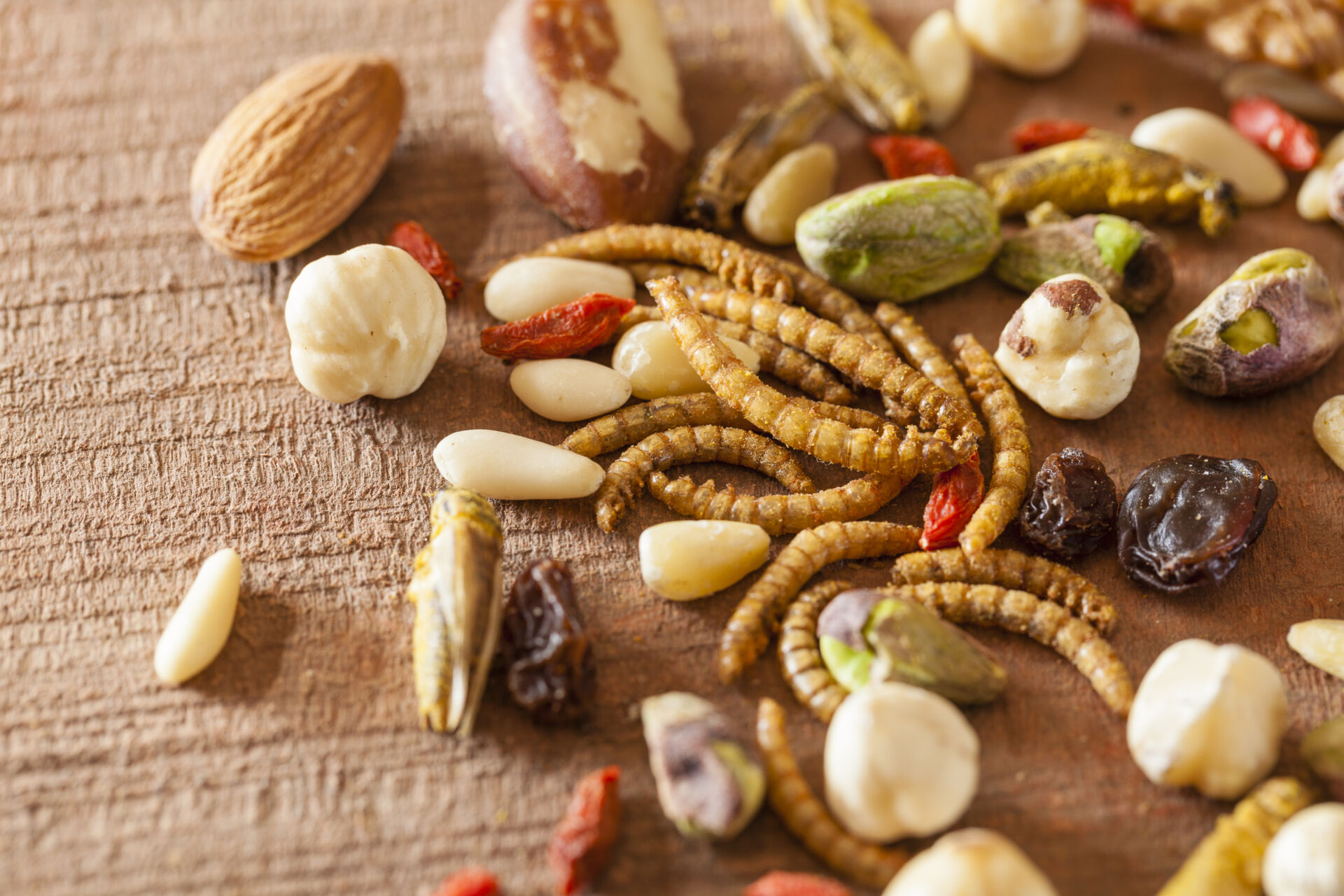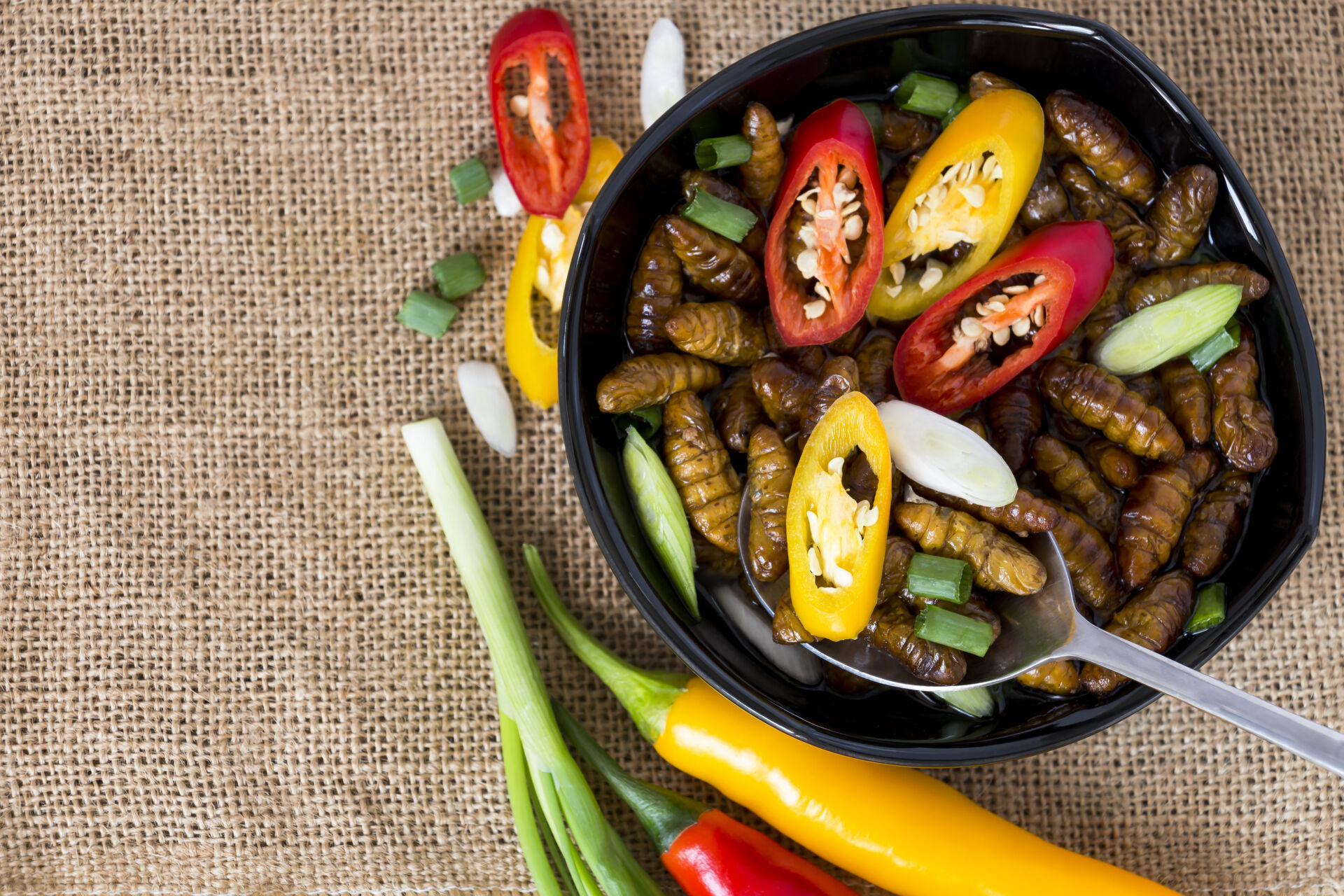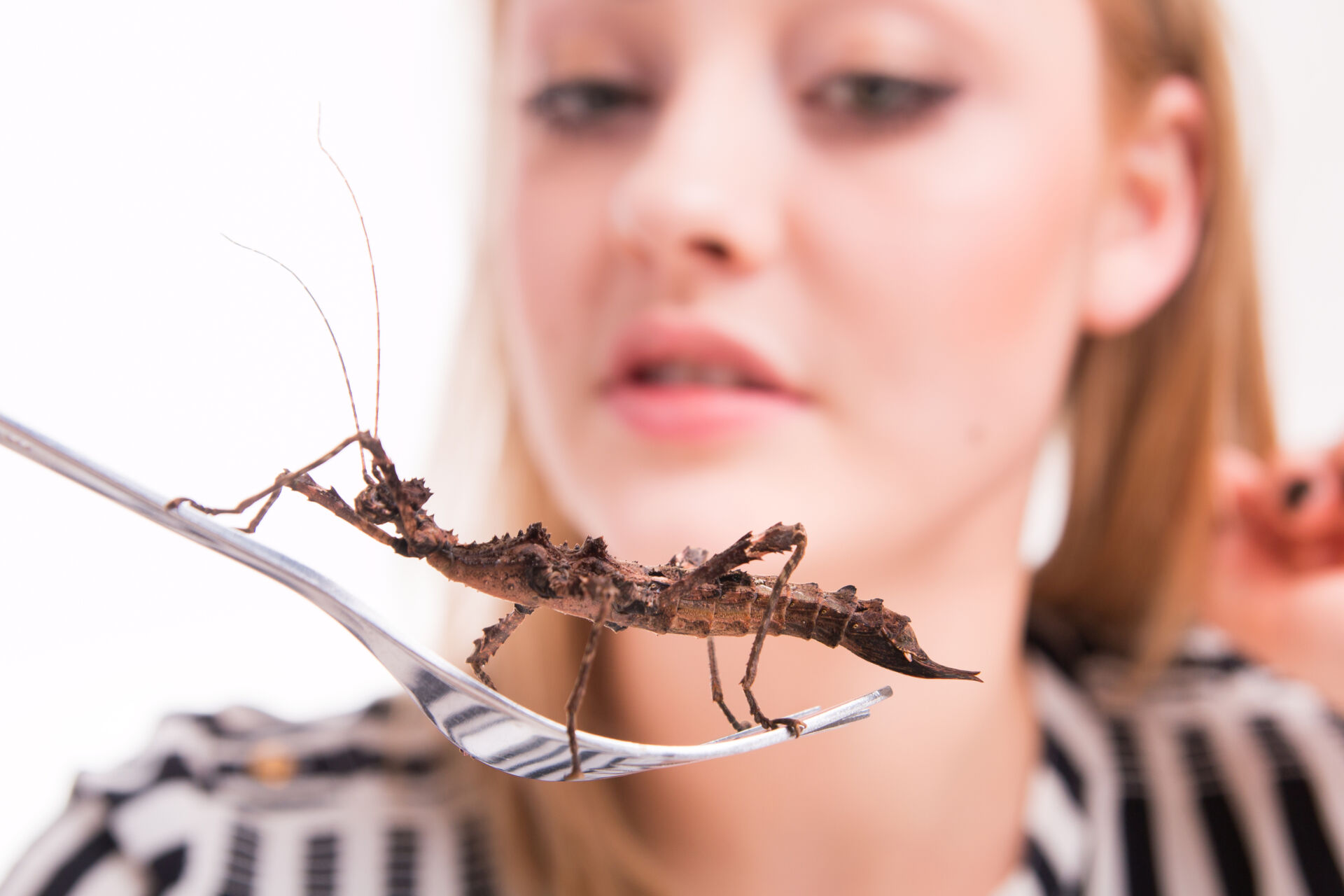 By Angela Foster via TruthTalkUK – Orwell Huxley’s Ghost – Tinkeringhalo2
By Angela Foster via TruthTalkUK – Orwell Huxley’s Ghost – Tinkeringhalo2
Let me begin by stating that this article has been inspired by two things. The first is my lifelong battle with a little bug known as the Lone Star Tick. A nasty creature that upon taking a tasty bite of human flesh, it turns the human’s digestive tract into a “no meat zone”, resulting in a little-known disease called Alpha Gal Syndrome.
Yes, I am that girl Eddie Murphy mockingly chided with the line, “I will just have a salad”. The conversation is had ad nauseum at almost every meal out with new friends. It’s embarrassing but most of the time they are intrigued by my conundrum.
The second was when I was watching Max Igan of The Crow House discuss an article on Chitin. Recently, while lying awake thinking about the World Health Organization and the WEF, I decided to look at what they were promoting as far as insect consumption. I mean, could it be that bad? People in other countries have eaten insects for centuries; however, after getting past the glossy pages on how insects have been a nutritional supplement for many, I decided to switch gears and look at the health studies and manufacturers of these greenwashing ideologies.
I was not disappointed; I discovered a plethora of material covering both topics.
My next move was to share some of the findings of the studies in a post on Twitter hoping others would lend to the conversation and expand on some of the studies I had found. I was not disappointed.
As of this morning over 600 of you did chime in and another 6,000 shared my post with thoughts of their own. I was not alone in my thinking! Let’s break some bread made of crickets and discuss spore about this.
Being a “Westerner” seems to be a dirty word in the overlord’s vocabulary. While other countries supposedly enjoy their bug-laden feasts (typically eaten out of desperation), we here in the West have an almost instant odious reaction regarding insects in our food. Perhaps intuitively, but this seems to be changing.

According to StartUs insights, the “insect for food” industry has a whopping 1,379,000 start-up ventures to date… Astanor Ventures, Upfront Ventures, and Hollywood’s own Robert Downey Jr.’ start-up, Footprint Collision.
Hong Kong’s Happiness Capital is another company, as well as Ynsect which is a French company who reportedly gained $427 million in funding (the largest of all insect-to-food companies to do so).
How did these investors know so long before the present manufactured food-shortage agenda that insects would even be considered a viable protein alternative?
According to Meticulous Research the edible insect market value is worth 7.96 billion.
These venture capitalists salivate over the monetary gain they stand to make; they seem undeterred by the daunting amount of money needed for the start-up costs of these facilities.
While some companies have been using insects in animal feed for over ten years, there are too many unanswered questions pertaining to the stability of health on humans eating insects.
E-Course: Backyard Chickens for Eggs
Back in 2009, Food Agriculture Organizations of the United Nations put out a white paper titled “How to Feed the World 2050”. For three days in Rome, anonymous high-level experts (none were identified in the article), gathered to decide the future course of our agricultural policies.
This included a focus on complaints of rural sprawl settlements and the increasing demand for crops as biofuels. Notably, the paper I listed has graphs that are projections into 2018, not one was accurate.
In the meantime, studies were being conducted on human consumption of insects. One paper stood out above the rest from the University of Nebraska: a thesis authored by Lee Palmer entitled “Edible Insects as a source of Food Allergens”.
In this paper it was observed that the parasitic insect Cochineal, used to produce the red dye labelled Carmine, caused great harm to millions of people with allergies to crustaceans. This was due to the difficulties they encountered digesting this insect-derived dye. Cloning the insect and changing its genome did not help the reaction humans had to the dye of this insect.
In 2015, another research paper indicated the many safety concerns of eating insects. “Edible Insects: a food security solution or a safety concern?” listed the numerous hazards such as allergies, microbial risk, parasitological risks, and chemical hazards.
At the time there was no conclusive research on insects as foodborne pathogens, data was scarce. Ultimately, the paper concludes that while we know insects can be eaten, there isn’t enough research done on the microbial side to determine whether it is indeed safe for human consumption.
Which brings up a very important point that many reading may be able to relate to. Will there ever be a true public discourse on the subject before actual government policies are enacted?
Policies based on the findings of agencies who presently appear to be completely controlled by the corporate interests they are supposed to be conducting oversight on. We will touch more on this further on.
Are you Chitin me? Chitin, like cellulose, the article states “is not digested by vertebrate animals on their own.” That is accomplished via a symbiotic relationship with bacteria and protozoa that facilitate the digestion.

The exoskeletons of insects are particularly bad for digestion. The most concerning studies involve mycotoxins, bacterial contamination, and enteric diseases (typhoid fever, cholera, Shigella and Escherichia coli) from black flies.
Chitlin is also identified as a suspect candidate with regards to fibrotic lung disease and toxoplasmosis. Another vector regarding health hazards associated with insect consumption are spore formations that cause biological hazards (especially mealworms).
Parasitic developmental forms were detected in 244 out of 300 insect farms. 81 percent of these were found to cause pathogens in humans.
A dissenting paper out of Canada hails insects as safe when heated to the proper temperatures; however, even after roasting and freezing the buggers, large traces of pesticides were still found in the finished product.
Please keep in mind there are no statutory laws or guidelines in place yet for these insect farms in the United States.
The United Kingdom is feverishly rushing to create guidelines to insect farms already being operated in production for livestock feed. As is so often the case these days we have the cart before the horse, only now we have the worm before the meal.
Now, regarding that public discussion on all of this. Like me, I am sure you were unaware that the Food Standards Agency posted a letter on transitional arrangements with regards to insect consumption.
Being the magnanimous entity they truly aren’t, they allowed us as consumers an eye-watering 29 days to research, process and respond to something that will most likely become a global policy after being implemented in the UK.
Let us stop for a moment and truly appreciate the gravity of this. This will become a global food policy. There will be no discussion. There will be no acknowledgement of health issues deriving from it in the same way that there are no acknowledgements of health issues deriving from certain medical procedures we are at this time prevented from discussing in public forums.
This is the reality being created by the complete regulatory capture of agencies entrusted to protect us. As more proof of this they added even more species of edible insects to the list of consumables to be discussed over this epic 29 days of non-existent public discourse.

I would also like to point out where we as consumers fall on the list of priorities in this discussion…somewhere after corporate and regulatory. The August 10th, 2022 deadline has passed, the agency has yet to update their call to action – and just to reiterate, I am almost positive you’ve never even heard of it until now. Cheers.
Like most of our food products, these insects will be genetically modified, cloned and gene edited before they hit people’s plates.
Shipping these bugs will also run risks due to the nature of how fast some of these bugs hatch. With that comes the possibility of escaping and mating with wild-type insects. Some of these insects hatch in 4 days, while others take longer.
Speaking of shipping, will they be loading these bugs onto autonomous electric trucks? You know, for the betterment of the planet? The facilities alone have so much technology operating yet they claim that it has a much better carbon output than factory livestock farms. Sorry, but my eyes glazed over trying to find the exact numbers between the two.

By all appearances the numbers do look lower, but more research is required to fully calculate the overall impact the entire transition will have on the biosphere.
If there is one thing, I have learned in the last two years, it is that the numbers change often and checking that daily always results in a different output.
As an aside, let’s not forget about the history of the biological weaponization of bugs in the past. Entomological warfare has been used since the 14th century.
What’s that line about history repeating itself? This weaponization was used on a large scale in Japan during WW2 to spread Cholera-coated flies as well as plague-infested fleas. That just rolls right off the tongue, doesn’t it?
Eco radicals in California released med flies in 1989 which destroyed crops and resulted in the quarantine of California fruits, costing thousands of jobs and billions of dollars. You can read more on biological warfare here.
As early as 2009 DARPA had added insects to their arsenal, including cyborg beetles to spy on whomever the enemy-du-jour of the day might be. Seems insects are being utilized in just about everything.
Finally, I would like to point out the social media/PR being applied to this entire agenda. It’s not surprising that the usual suspects are involved. Soapbox heroes over at Vice and the WEF proclaim “Bugs are awesome and delicious”!
The BBC did an entire article on eating grasshoppers, complete with a gag-inducing way to prepare them. Unfortunately for the author, he was not informed that it takes over 1000 grasshoppers to get the amount of protein a legume or a piece of chicken provides.
Bugs are clearly inferior to meat from a nutrition standpoint-Beef for instance, contains over 50,000 unique nutritional compounds most of which are not found in bugs
— Dr Shawn Baker ???? (@SBakerMD) August 20, 2022
However, he is still happily sold on his new recipes. Dr. Shawn Baker did a thread on this very issue, stating that beef provides over fifty thousand nutritional compounds that cannot be found in insects.
How about a study on how celebrities can be used to woo people into eating the nasty creatures like this one?
Nothing like a little propaganda-driven psychological study to make sure they are bribing us properly. Leave it to Nicole Kidman and Angelina Jolie to make that urge to eat bugs that much greater.
Will we become “lunchbox racists”, as Spoon University puts it, geared towards cultural appropriation of food?
Bugs have feelings too! As time goes on and we learn more about eating the bugs, please keep the studies linked in the tweet thread and within the article in mind.
Nothing in the last three years has made sense. Adding manufactured food shortages is just another hurdle to bring in this dietary nightmare. As always, do your own research and feel free to reach out to me on Twitter to share your findings.
A special thank you to those who contributed to this work via Twitter!
Sourced from SikhForTruth – TruthTalkUK
Become a Patron!
Or support us at SubscribeStar
Donate cryptocurrency HERE
Subscribe to Activist Post for truth, peace, and freedom news. Follow us on SoMee, Telegram, HIVE, Flote, Minds, MeWe, Twitter, Gab, What Really Happened and GETTR.
Provide, Protect and Profit from what’s coming! Get a free issue of Counter Markets today.

Be the first to comment on "The Bugs That Keep Me Up at Night: Greenwashing Insects for Food"